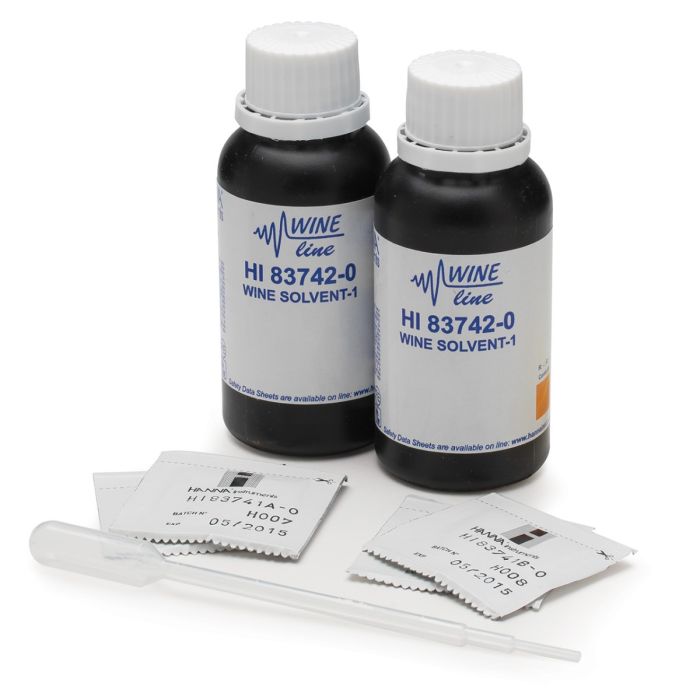Description
The HI83741-20 are high quality reagents that are pre-measured, allowing for users to achieve fast and accurate colorimetric measurements. These reagents follow a method in which the reaction between iron and reagents causes a purple tint in the sample. By simply following the procedure and adding the correct amount of wine solvent 1, and 1 packet each of HI83741A-0 and HI83741B-0 from the reagent set to the sample, the reaction between iron and reagents causes a purple tint in the sample. The intensity of color is determined by the compatible HI83741 photometer and the concentration will be displayed. The results will be displayed in ppm (mg/L) of iron. These reagents are designed to be used with samples that have an expected range of 0.0 to 15.0 ppm iron.
Trace iron concentrations in wine are beneficial for enzyme activity, as stabilizer, and as a functional component for proteins. At higher concentrations it alters the redox potential, in favouring oxidation, affecting sensory characteristics and participating in the formation of complexes with tannin and phosphates resulting in instabilities (casse). The most common iron casse is ‘white casse’ (iron phosphate), it is initially seen as milky white cloud and later as a precipitate. The ‘blue casse’ (ferric tannate) that occurs less often can be observed in white wines for example after tannic acid additions.Most of the iron present in wine is present in the ferrous Fe(II) state. The ratio of the Fe(II)/Fe(III) depends on the oxidation state of the wine. If Fe(III) is formed, it can bind with phosphates that are normally present in wine.Since iron strongly binds with several organic acids, some wine makers add citric acid to the wine to complex free iron if the concentration exceeds 5 mg/L. If no contamination occurs the normal iron concentrations in must range from 1 to 5 ppm. The most important source of iron in wine is contact with iron containing alloys during processing. During fermentation a part of the iron is absorbed by yeast and thus removed from the wine during filtration.
Casse formation depends on: iron concentration, pH, ORP, phosphate, content and the type of wine.
|
white casse formation
|
white casse inhibition
|
|
iron concentration > 7 ppm
|
iron concentration < 5 ppm
|
|
high redox potential (Fe3+ present)
|
clarification with bentonite
|
|
pH 2.9-3.6
|
citric acid addition 12-24 g/hL
|







